In the traditional Hatha Yoga system, Shatkarma occupies a central role. It is a combination of the words shat and karma; which are sanskrit and translate as six and act, respectively. Shatkarma are six colorful yogic cleansing methods. They are very old methods that are utilized to cleanse the body, remove obstructions to energy, and get the practitioners ready for advanced stages of yoga like Pranayama, Dhyana, and Samadhi.
At Om Shanti Om Yoga School, Rishikesh, we feel that inner cleansing is not only helpful but necessary for genuine yogic development. The yogic literature, particularly the Hatha Yoga Pradipika, identifies Shatkarma meaning the first step towards any serious practitioner seeking spiritual development.
Let's talk about the six deep practices of Shatkarma Yoga and how they help your body and mind.
What Is Shatkarma in Yoga?
Cleaning mucus is always a tough task because it is in response to an allergy in the body. Lymph in our body is also a type of fluid that is full of dirt and bacteria. Without cleansing mucus, it is not worth performing poses in yoga.
Shatkarma yoga is the method of cleaning mucus from the energy channels of the body. It is defined in six steps for the different parts of the body. They cover the whole system of the body to cleanse. It is good to perform these Kriyas in the presence of a yogic master or Guru. Beginners are strictly not allowed to perform these without a master.
- Neti – Nasal Purification
- Dhauti – Upper Digestive Tract Cleansing
- Nauli – Abdominal Churning
- Basti – Colon Cleansing
- Kapalabhati – Purification of the Frontal Brain Area
- Trataka- Eye Cleansing with Intense Gazing
Each of these steps is designed to perform and cleanse the system. We can’t say they are too easy to perform, it was like a stupid idea for those who heard about it first time. Intense gazing on flame Vastra Dhauti they are unexplainable procedure with extreme good benefits.
Types of Shatkarma Kriyas and Their Benefits
The six kriyas are also known as Shatkriyas; they are performed in response to toxins, mucus and undigested food in the tract. They are very beneficial and clear the mental fog of the body, and stimulate the body for deeper practices. Here are some benefits of the shatkriyas.
1. Neti – Nasal Cleaning
Neti Kriya is a nasal cleansing method that purifies the nasal passage, enhances breathing, and removes accumulated impurities.
Common Types:
- Jala Neti: Body temperature saline water is poured in one nostril and allowed to exit through the other, flushing out mucus and debris.
- Sutra Neti: A rubber catheter or soft thread is inserted gently through the nose to clean deeper nasal cavities.
Key Benefits:
- Decreases sinus infections, allergies, and congestion
- Improves oxygen intake and breathing capacity
- Clears the headspace, enhancing concentration and tranquility
Neti is among the very first kriyas taught to students at Om Shanti Om Yoga, particularly during our morning cleansing rituals.
2. Dhauti – Digestive Tract Purification
Dhauti contains a sequence of procedures that cleanse the stomach, food pipe, and mouth. Dhauti is found to be extremely useful for individuals experiencing acidity, indigestion, or sluggish metabolism.
Types of Dhauti:
- Vaman Dhauti (Kunjal Kriya): Involves drinking saline water and deliberately vomiting to cleanse the stomach.
- Vastra Dhauti: A small piece of cloth is swallowed and then removed to purify the esophagus.
- Danta and Jihva Dhauti: Tongue and tooth cleaning.
- Varisara Dhauti: Total cleansing of the intestines with water and movement techniques.
Benefits:
- Removes toxins from the digestive tract
- Aids in relief from bloating, acidity, and gas
- Prepares the body for deeper pranayama practices.
3. Nauli – Abdominal Churning
Nauli Kriya is an active exercise in which abdominal muscles are separated and churned in a circular manner. Massages internal organs and activates the digestion process naturally.
Variations:
- Madhyama Nauli – Movement in the middle of the abdomen
- Vama Nauli – Left side churning
- Dakshina Nauli – Right side churning
Benefits:
- Strengthening core muscles and internal organs
- Improves digestion and dissolves digestive congestion
- Activates Manipura Chakra (Solar Plexus)
While it might appear rigorous, with clear instructions from senior teachers at Om Shanti Om, Nauli is transformed into a power kriya for energy and clarity.
4. Basti – Yogic Colon Cleansing
Basti is the yoga equivalent of an enema. It is done to cleanse the large intestine and enhance bowel movement.
Types:
- Jala Basti – Cleansing with water
- Sthala Basti – Utilizes air and control of the belly, done without water
Benefits:
- Aids in chronic constipation and digestive dyscrasia
- Flushes out toxic substance from the colon
- Balances the internal energy and Vata dosha of the body
Due to its intricacy, Basti should be most effectively learned under the guidance of an expert.
5. Kapalabhati – Skull Shining Technique
The literal meaning of Kapalabhati is "Shining Forehead." It is a strong breathing technique that expels toxins from the body and charges the mind.
Main Types:
- Vatakrama Kapalabhati – Active exhalation with passive inhalation
- Vyutkrama and Sheetkrama – Water purification similar to Neti
Advantages:
- Detoxifies lungs and nostrils
- Strengthens brain and dispels mental fatigue
- Boosts digestion and regulates energy
This kriya is also practiced routinely in contemporary yoga regimens as a pre-meditation and pre-pranayama practice.
6. Trataka – Holding the gaze in a single direction
Trataka is a very strong kriya for improving concentration and cleansing the eyes and mind. The common practice is to look at a stationary object such as a candle flame without blinking.
How to Practice:
Sit comfortably and stare at a candle flame put at eye level. Keep staring firmly without blinking till tears roll, then shut your eyes and see the flame internally.
Benefits:
- Enhances eyesight and fortifies optic nerves
- Enhances mental concentration and stability
- Opens the Ajna Chakra (Third Eye)
Trataka also helps deeper states of meditation by conditioning the mind to be conscious of one point.
Choosing Om Shanti Om Yoga Ashram For Learning Shatkarmas
As we all have seen that there are different benefits of the shatkriyas or shatkarmas. These benefits are effective when we learn shatkriyas from the expert master. The next part is how difficult they are to perform means we have to think twice without a master. Kriyas like Nauli are not for beginners. We need to focus and especially master the movement of the muscles before performing this kriya.
At Om Shanti Om Yoga Ashram, you will meet the best masters, and the environment here is the key to learning. You will know the physical benefits and theoretical knowledge of the Shatkarmas from expert teachers. In the presence of yogic Gurus, it will be a right-hand work. Here are some counted benefits to choose Om Shanti Om:
- Best teachers of yoga and Shatkarmas
- Best environment to learn
- Give both practical and theoretical knowledge of the shatkarmas
- Have diverse forms to teach yoga Retreat, courses and classes
- Accommodation for longer courses
- Recorded the best experience of the previous students.
Final Thoughts
In yoga, transformation begins from within. Only after one has cleansed the body, mind, and energy channels can one hope to achieve mastery in asanas or dive deep into meditation.
This is a place where Shatkarma Yoga enters as a central ingredient. Through six classical ways of cleansing, refining and preparing, practitioners become capable of purifying toxins and coordinating inner processes, and ultimately preparing for profounder yogic exercises.
These regimens detoxify the physical body but, moreover, also sharpen mental faculties and emotional balance. If practiced regularly under experienced guidance, Shatkarma unlocks deep portals to a healthier, lighter, and more spiritually aware life.
At Om Shanti Om Yoga in Rishikesh, we assist you in embracing these transformative practices with love, sincerity, and individual care, guiding you step by step towards inner purity and peace.

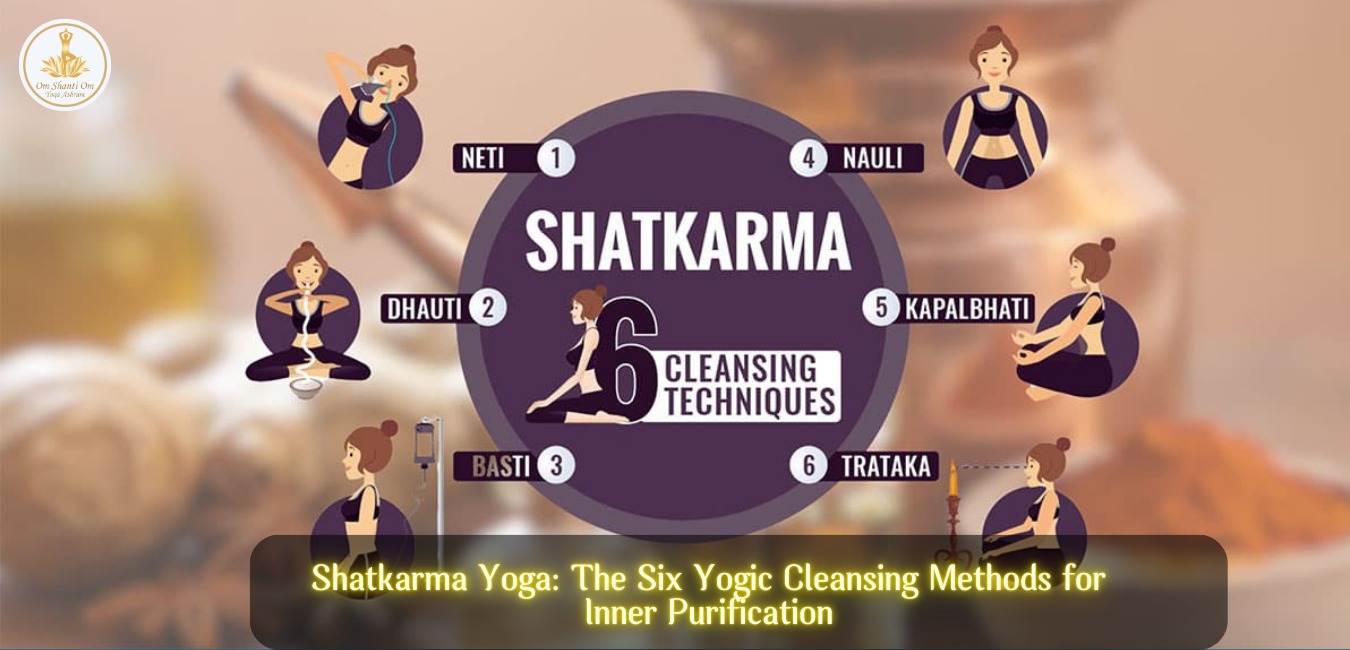







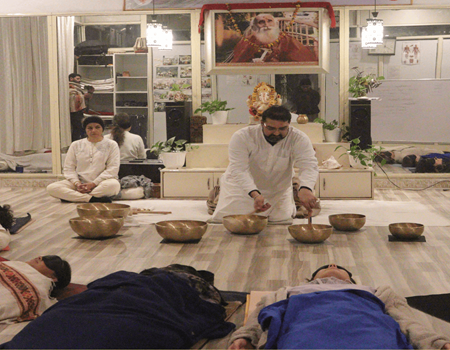




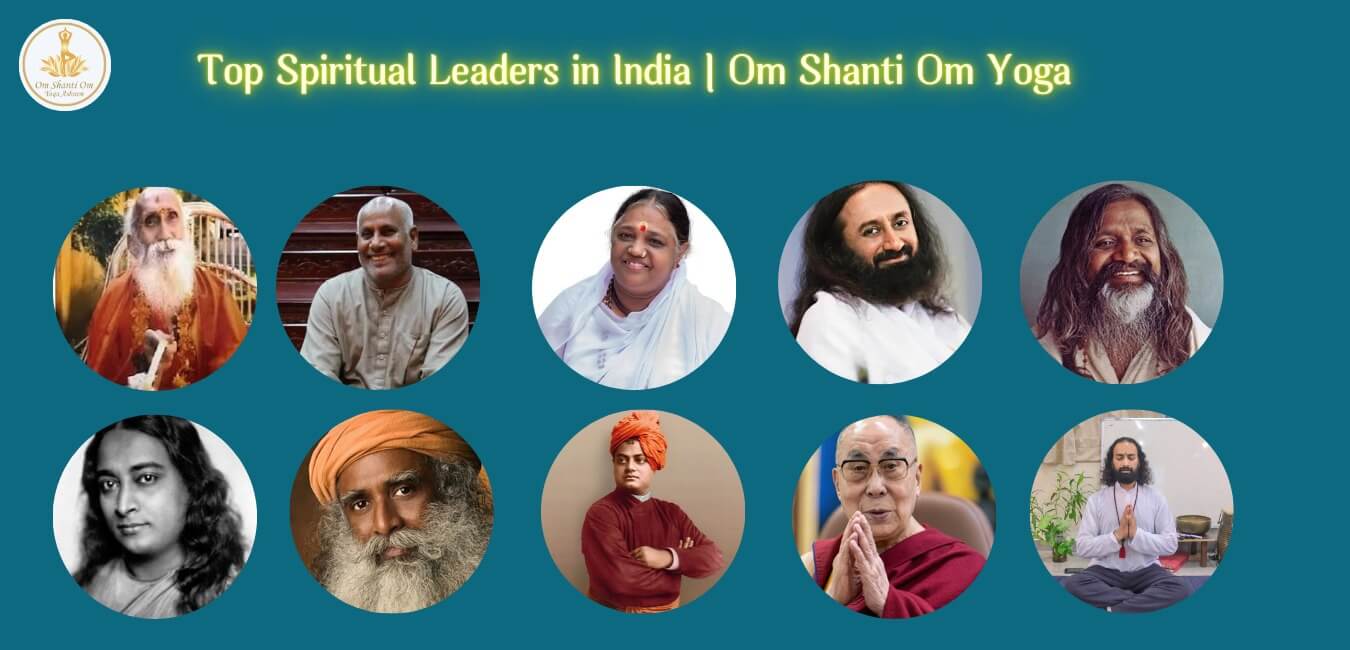

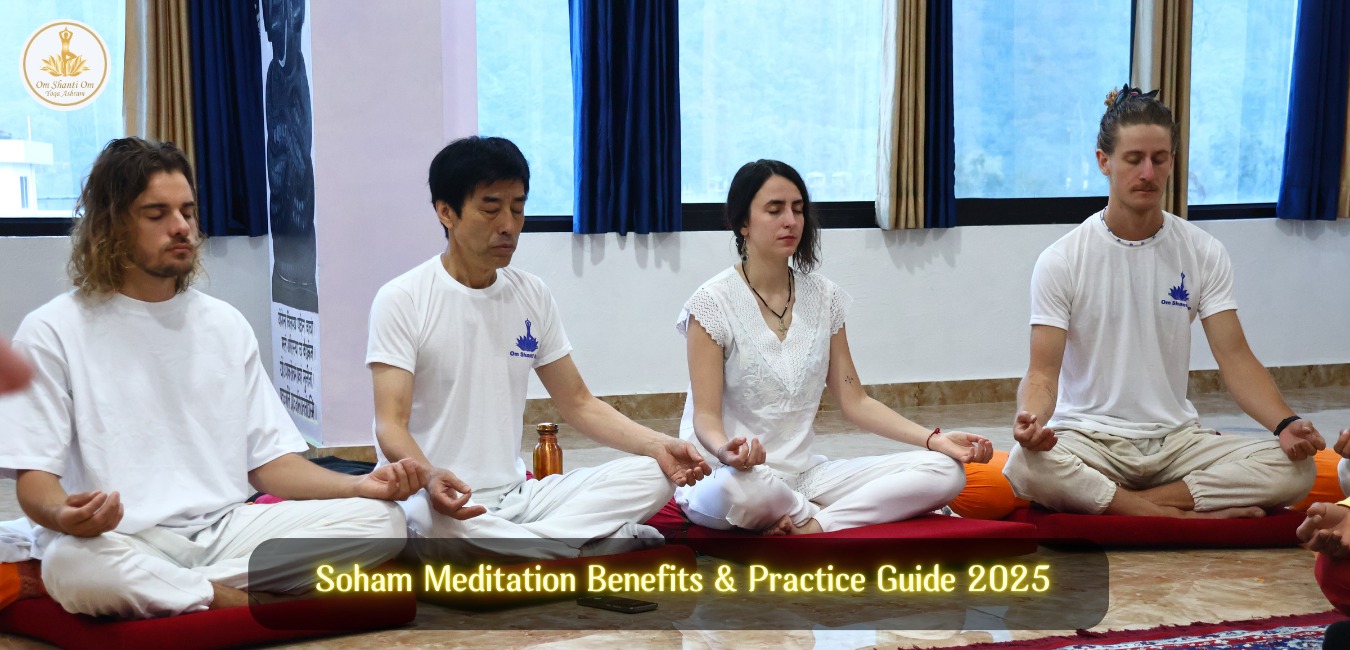

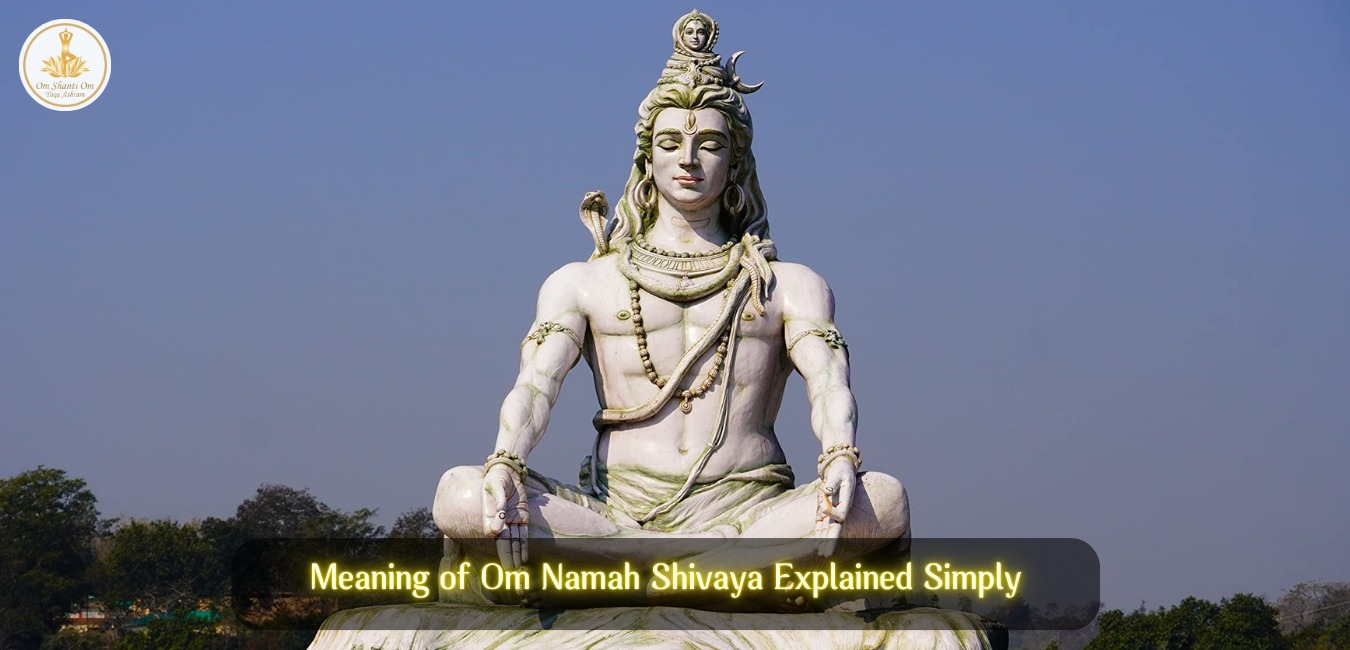
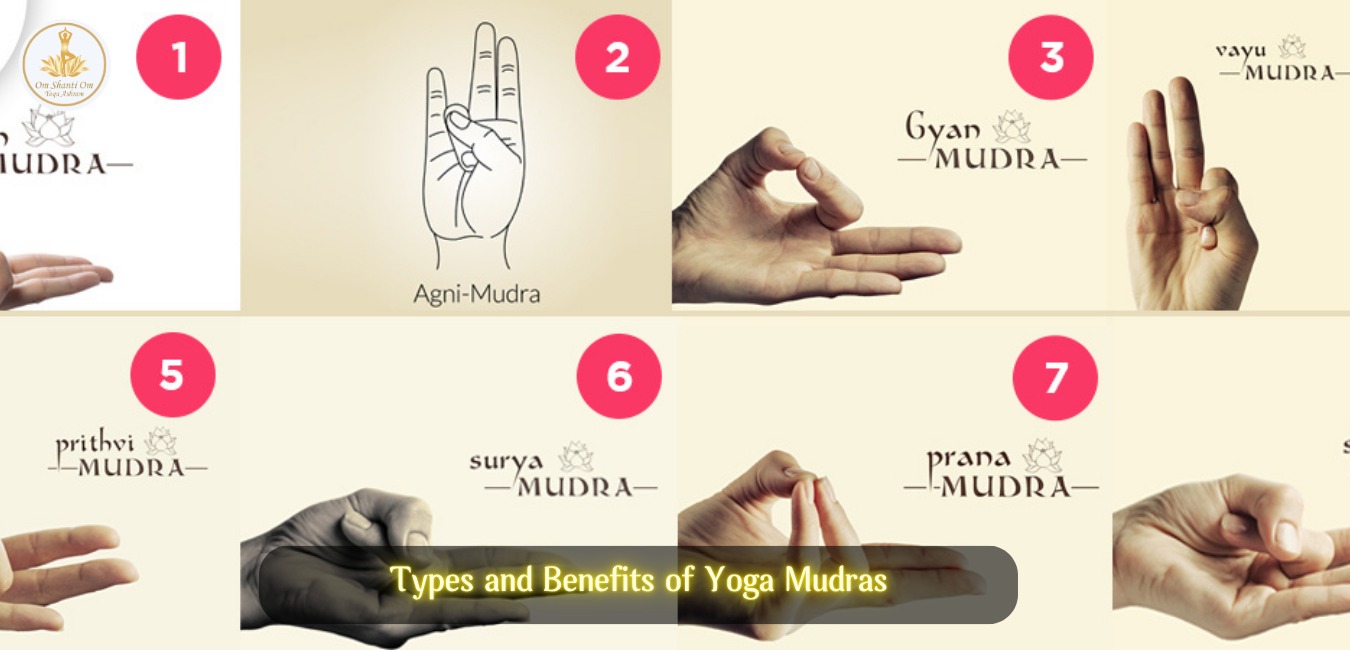




0 Comments
No comments yet. Be the first to comment!